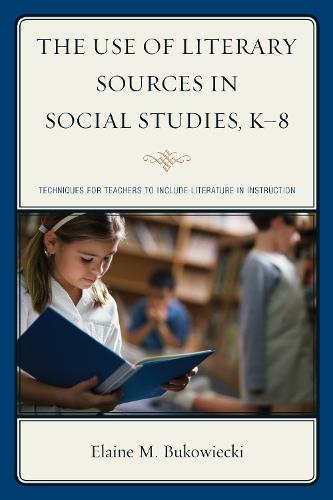Full Product Details
Author: Elaine M. Bukowiecki
Publisher: Bloomsbury Publishing Plc
Imprint: Rowman & Littlefield Education
Dimensions:
Width: 16.20cm
, Height: 2.00cm
, Length: 23.50cm
Weight: 0.440kg
ISBN: 9781475809183
ISBN 10: 1475809182
Pages: 216
Publication Date: 18 March 2014
Audience:
Professional and scholarly
,
Professional & Vocational
Format: Hardback
Publisher's Status: Active
Availability: In Print

This item will be ordered in for you from one of our suppliers. Upon receipt, we will promptly dispatch it out to you. For in store availability, please contact us.
Reviews
The author has clearly presented her conceptual framework. It was very easy for me to understand her perspective and to predict what I would be reading in the text. I appreciate the organization of the text; in many ways it is parallel to how I teach my elementary methods course. -- Cheryl Mason Bolick, associate professor, University of North Carolina at Chapel Hill This work is very accessible to students. It is clearly written, avoids jargon, and provides opportunities for students to experience concepts several times, in several ways. The case studies and literature listings are very student-friendly. -- Dr. Christopher S. Boe, associate professor and director of graduate programs in teacher education, Pfeiffer University The format is very digestible for students as well as teachers. I can imagine assigning sections of chapters that are, in themselves, easy for students to comprehend individually. These segments might then be joined with others to give students a grasp of the entire chapter. Additionally, these small pieces could also stand alone. Given the sometimes limited amount of instructional time in the classroom, the advantage for this text lies in it accessibility at a variety of levels. -- Richard K. Gordon, professor of teacher education, California State University, Dominquez Hills
It is rather difficult to think about text material without the inclusion of common core standards of reading, writing, speaking, listening, and language. This book is another instructional intervention designed to positively impact student performance. The following questions, among others, are ably answered in this wonderfully laid-out, practical text, which is designed to help teachers move the teaching of social studies to another level. What criteria are utilized to select literature types for use in social studies classes? How are lessons modified to meet the needs of diverse learners? How important is prior knowledge regarding social studies topics? What are some guidelines to employ to help students in a social studies class comprehend and respond to text material? Why is assessment important and necessary? Is there a need for reflections? If so, when/how should they be incorporated? For teachers who would like to help children become lovers of social studies, the author describes literature sources and literacy techniques that can be used for varied social studies. Additionally, each chapter contains a summary, reflective questions for teachers, topics of discussion for college/university classrooms, and references. Summing Up: Recommended. Upper-division undergraduate, graduate, research, and professional collections. CHOICE The author has clearly presented her conceptual framework. It was very easy for me to understand her perspective and to predict what I would be reading in the text. I appreciate the organization of the text; in many ways it is parallel to how I teach my elementary methods course. -- Cheryl Mason Bolick, associate professor, University of North Carolina at Chapel Hill This work is very accessible to students. It is clearly written, avoids jargon, and provides opportunities for students to experience concepts several times, in several ways. The case studies and literature listings are very student-friendly. -- Dr. Christopher S. Boe, associate professor and director of graduate programs in teacher education, Pfeiffer University The format is very digestible for students as well as teachers. I can imagine assigning sections of chapters that are, in themselves, easy for students to comprehend individually. These segments might then be joined with others to give students a grasp of the entire chapter. Additionally, these small pieces could also stand alone. Given the sometimes limited amount of instructional time in the classroom, the advantage for this text lies in it accessibility at a variety of levels. -- Richard K. Gordon, professor of teacher education, California State University, Dominquez Hills
Author Information
Dr. Elaine M. Bukowiecki is a professor of literary education at Bridgewater State University, Bridgewater, Massachusetts, where she coordinates the Graduate Programs in Reading. Elaine is a former Massachusetts elementary-school classroom teacher and a Connecticut district-wide language arts coordinator.




